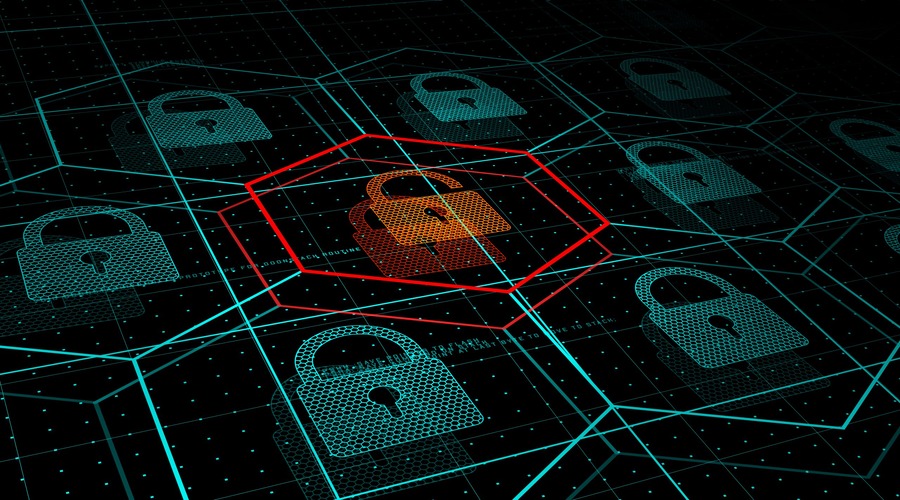As the Internet of Things (IoT) continues to expand, connecting various devices and systems, the need for robust security measures becomes paramount. With cyber attacks on the rise, it is crucial to explore innovative technologies that can safeguard IoT devices and ensure the integrity of data transmissions. Blockchain, often associated with cryptocurrencies, has emerged as a promising solution to enhance the security of IoT devices. This article delves into the role of blockchain in securing IoT devices from cyber attacks, exploring its capabilities, benefits, and real-world applications.
Understanding IoT Devices and Their Vulnerabilities
IoT devices are interconnected smart devices that gather and exchange data over the internet. These devices, ranging from smart thermostats to industrial machinery, are vulnerable to cyber attacks due to their interconnected nature and potential security loopholes. Attackers can exploit vulnerabilities in IoT devices to gain unauthorized access, manipulate data, or disrupt their normal functioning. This poses significant risks to individuals, businesses, and critical infrastructure.
The Growing Threat of Cyber Attacks on IoT Devices
With the proliferation of IoT devices, the threat landscape has expanded. Cybercriminals exploit vulnerabilities in IoT devices to launch various types of attacks, including distributed denial-of-service (DDoS) attacks, data breaches, and remote control hijacking. These attacks not only compromise the privacy and security of individuals but can also lead to severe consequences in sectors such as healthcare, transportation, and energy.
The Need for Enhanced Security Measures
Traditional security measures are often insufficient to protect IoT devices from evolving cyber threats. Firewalls and encryption techniques alone cannot guarantee the integrity and confidentiality of data exchanged between interconnected devices. Therefore, there is a pressing need for advanced security measures that can address the unique challenges posed by IoT ecosystems.
Exploring Blockchain Technology
Blockchain, the underlying technology of cryptocurrencies like Bitcoin, has gained significant attention due to its decentralized and immutable nature. It is essentially a distributed ledger that records transactions across multiple nodes, ensuring transparency, security, and tamper resistance. Each transaction, or block, is cryptographically linked to the previous one, forming a chain of blocks, hence the name “blockchain.”
How Blockchain Enhances Security in IoT Devices
Blockchain technology can enhance the security of IoT devices by providing several key features:
- Decentralization: Unlike traditional centralized systems, blockchain operates in a decentralized manner, eliminating the need for a central authority. This reduces the risk of a single point of failure and makes it difficult for attackers to compromise the entire network.
- Immutability: Once data is recorded on a blockchain, it cannot be modified or tampered with. This immutability ensures the integrity of data transmitted between IoT devices and prevents unauthorized alterations.
- Authentication and Authorization: Blockchain enables secure identification and authentication of IoT devices through cryptographic techniques. This ensures that only authorized devices can access the network and exchange data, mitigating the risk of unauthorized access.
- Data Integrity and Transparency: Every transaction recorded on the blockchain is transparent and verifiable by all participants. This ensures the integrity of data transmitted between IoT devices and enables quick detection of any malicious activities or tampering attempts.
- Smart Contracts: Smart contracts are self-executing contracts with predefined rules encoded on the blockchain. They enable automated and secure interactions between IoT devices, ensuring that agreed-upon conditions are met before executing actions. This reduces the risk of fraudulent or malicious activities.
Benefits of Blockchain for IoT Security
The integration of blockchain technology in securing IoT devices offers several benefits:
- Enhanced Security: Blockchain’s decentralized and immutable nature provides a robust security framework for IoT devices, reducing the risk of unauthorized access, data breaches, and device manipulation.
- Data Integrity and Privacy: By leveraging cryptographic techniques, blockchain ensures the integrity and privacy of data transmitted between IoT devices. This protects sensitive information and maintains the confidentiality of communications.
- Trust and Transparency: Blockchain’s transparent and verifiable nature builds trust among participants in the IoT ecosystem. It enables secure and tamper-proof data exchange, fostering collaboration and interoperability between devices.
- Resilience to Attacks: Blockchain’s distributed nature makes it resilient to various cyber attacks. Even if one node or device is compromised, the decentralized network ensures that other nodes validate and secure the data.
- Streamlined Compliance: Blockchain provides an auditable trail of transactions, simplifying compliance with regulations and standards. This is particularly crucial in industries with strict data privacy and security requirements.

Challenges and Limitations of Implementing Blockchain in IoT Security
While blockchain shows promise in enhancing IoT security, certain challenges and limitations need to be considered:
- Scalability: Blockchain technology, in its current form, faces scalability issues when applied to large-scale IoT deployments. The processing power required for consensus mechanisms and the storage demands of a growing blockchain can limit scalability.
- High Energy Consumption: Blockchain networks often require significant computational power and energy consumption, which can be impractical for resource-constrained IoT devices powered by batteries or low-power sources.
- Integration Complexity: Integrating blockchain into existing IoT infrastructure can be complex and time-consuming. Compatibility issues, interoperability challenges, and the need for standardization may arise during implementation.
- Costs: Implementing and maintaining a blockchain-based security framework can be costly, especially for small-scale IoT deployments. The infrastructure, computational resources, and skilled personnel required for blockchain implementation may pose financial challenges.
Real-World Applications of Blockchain in Securing IoT Devices
Blockchain technology is being applied in various domains to enhance the security of IoT devices:
- Supply Chain Management: Blockchain can ensure the integrity and transparency of supply chains by tracking and verifying the movement of goods. This reduces the risk of counterfeit products, unauthorized tampering, and fraud.
- Healthcare: Blockchain can secure medical records, facilitate secure sharing of patient data, and enable traceability of pharmaceuticals, reducing medical fraud and ensuring patient privacy.
- Smart Energy Grids: Blockchain-based microgrids enable secure peer-to-peer energy transactions, optimizing energy distribution and enhancing grid resilience against cyber attacks.
- Smart Cities: Blockchain can improve the security of smart city infrastructure, such as traffic management systems and public utilities, ensuring the reliability and integrity of critical services.
- Automotive Industry: Blockchain can enhance the security of connected vehicles, enabling secure firmware updates, verifying ownership, and facilitating secure data exchange between vehicles.
The Future of Blockchain in IoT Security
As the IoT ecosystem expands and cyber threats evolve, blockchain technology is poised to play a crucial role in securing IoT devices. Ongoing research and development aim to address the current limitations and improve the scalability, efficiency, and interoperability of blockchain solutions for IoT security. With advancements in consensus algorithms, integration frameworks, and energy-efficient protocols, blockchain is likely to become a mainstream security technology for IoT devices in the future.
The future of blockchain in IoT security looks promising. As the Internet of Things continues to expand, the need for robust security measures becomes increasingly crucial. Blockchain technology offers a decentralized, transparent, and tamper-resistant framework that can enhance the security of IoT devices. Ongoing research and development efforts are focused on improving scalability, efficiency, and interoperability to overcome current limitations. With advancements in consensus algorithms, integration frameworks, and energy-efficient protocols, blockchain is expected to become a mainstream security technology for IoT devices. By leveraging blockchain’s features, we can create a safer and more resilient IoT ecosystem, ensuring the protection of sensitive data and the integrity of interconnected devices.
Conclusion
Securing IoT devices from cyber attacks is of utmost importance in today’s interconnected world. Blockchain technology offers a promising solution to address the security vulnerabilities of IoT devices. Its decentralized nature, immutability, and cryptographic features enhance the integrity, privacy, and trustworthiness of IoT ecosystems. While challenges and limitations exist, ongoing developments are expected to overcome these obstacles, leading to widespread adoption of blockchain for IoT security. By leveraging blockchain technology, we can create a safer and more resilient IoT environment, ensuring the protection of sensitive data and the seamless functioning of interconnected devices.
FAQs
- What is the Internet of Things (IoT)? The Internet of Things refers to the network of interconnected devices that can communicate and exchange data over the internet. These devices range from everyday objects to industrial machinery and are embedded with sensors and software to collect and transmit data.
- What are the vulnerabilities of IoT devices? IoT devices are vulnerable to various cyber attacks due to their interconnected nature and potential security loopholes. Common vulnerabilities include weak or default passwords, outdated software, lack of encryption, and inadequate security measures.
- How does blockchain enhance the security of IoT devices? Blockchain enhances IoT security through its decentralized nature, immutability, authentication mechanisms, and cryptographic techniques. It ensures the integrity and privacy of data, enables secure identification and authorization, and mitigates the risk of unauthorized access.
- What are the real-world applications of blockchain in securing IoT devices? Blockchain is being applied in domains such as supply chain management, healthcare, smart energy grids, smart cities, and the automotive industry to enhance the security of IoT devices. It enables secure data exchange, traceability, and tamper-proof record-keeping.
- What is the future of blockchain in IoT security? With ongoing advancements in scalability, efficiency, and interoperability, blockchain is expected to play a significant role in securing IoT devices. Research and development efforts aim to overcome current limitations and make blockchain a mainstream security technology for IoT ecosystems.
